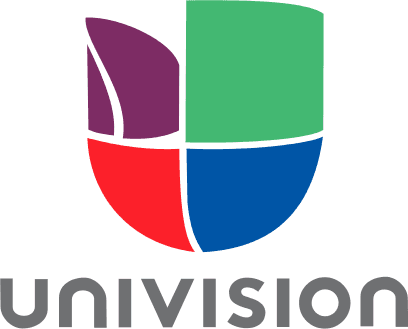What is Neurofeedback Therapy for ADHD?
Since 1980, the Drake Institute of Neurophysical Medicine has pioneered the use of neurofeedback therapy for many disorders, and for the last 3 decades, our ADHD clinic in Orange County has successfully treated thousands of patients with the use of FDA-approved qEEG brain mapping technology and proven neurofeedback techniques.
Neurofeedback training for ADHD is a non-invasive, non-drug treatment protocol designed to help patients retrain their brains for more normal and optimal functioning to reduce or eliminate symptoms.
And when we say non-invasive, we mean it: during neurofeedback treatment, drugs are not administered; in fact, neurofeedback is akin to using a thermometer to take a patient’s temperature and only records the patient’s brain activity but displays the information back to the patient so the patient can improve one’s brain functioning.
Indeed, neurotherapy for ADHD only requires patients to wear a sensor designed to record and display current brain functioning. This treatment protocol, in conjunction with qEEG brain mapping, helps patients learn how to self-regulate for better concentration and focus as they can see, in real-time, their current brainwave patterns.
Best of all, because neurofeedback results are due to a self-generated, learned response, the results are typically long-lasting—with many of our patients reporting life-changing improvement of their ADHD-related symptoms.
And since the Drake Institute uses 100%, drug-free treatment protocols, patients don’t have to worry about experiencing negative side-effects from stimulant ADHD drugs.
What is ADHD?
ADHD stands for attention deficit hyperactivity disorder, and it is characterized by an inability to focus, pay attention, sit still, control impulses and self-regulate. ADHD can be caused by multiple factors, including heredity, head injuries, maternal prenatal substance abuse, and premature childbirth.
Though the symptoms are behavioral but are coming from the brain, therefore the brain is at the center of all our treatment protocols.
Whether it’s ADHD, Autism, Stress, General Anxiety, PTSD, or Panic Attacks, we believe the best method for treating patients is by providing them with the tools to self-regulate and to develop healthy brain functioning.
Side-Effects of ADHD Drugs
In many cases, ADHD is treated with stimulant medications. These drugs can provide temporary symptom relief, but they also carry many potential significant side-effects, including:
- Nervousness
- Change in personality
- Loss of appetite
- Suppressing growth rate
- Weight loss
- Headaches
- Upset stomach
- Psychotic reactions
- Insomnia
- increase in blood pressure and palpitations
- Risk of substance abuse
What’s more, individuals taking these medications can develop a tolerance and may require a higher dosage to maintain the same level of symptom reduction. As the dosage increases, so does the probability of the patient experiencing one or several negative side effects listed above. However, with the help of neurofeedback techniques and brain mapping technologies, many patients can be successfully helped without medications.
ADHD medications also don’t treat the root cause of the patient’s problems, which is brain dysregulation. Because of this, patients choosing to discontinue the use of their ADHD medications will likely see their ADHD symptoms return.
How Does Neurofeedback Training for ADHD Work?
The human brain weighs about 2 lbs., but despite its weight, it still uses about half of the body’s blood glucose to create electrochemical energy (electricity) to carry out all its functions, such as:
- Attention & Concentration
- Self-monitoring
- Learning
- Emotional Regulation
- Behavioral control
- Problem Solving
- Executive Functioning
- Spatial Perception
- Language processing
- Sleep & Wake Cycles
During neurofeedback therapy, this electrical activity is recorded in the form of brainwaves through non-invasive sensors placed on the patient’s head.
These brainwaves occur at different frequencies, with Delta and Theta waves being slow, and Beta waves being fast.
Delta and Theta waves occur when the brain is under-aroused or functioning at a reduced capacity, like when we’re sleeping or daydreaming.
On the other hand, Beta waves increase when networks of neurons in the brain are fully engaged to process information. These waves need to be dominant to control attention, behavior, emotion, and learning. And by monitoring a patient’s brainwave activity, we can determine if it’s producing too much of the slow brainwaves or too few of the fast brainwaves. In both cases, the patient’s brain will be operating at a reduced capacity. It’s the goal of our neurofeedback treatment protocols to help patients improve their brain regulation to enhance focus, concentration, and self-regulation of their behavior.
With the help of neurofeedback equipment, patients can learn to strengthen and improve their brainwave patterns to the more dominant and faster Beta waves required for focus, organization, follow-through, and basic learning functions.
To identify the dysregulated areas of the brain, the Drake Institute uses qEEG brain mapping to record the patient’s current brainwave patterns.
Brain Mapping
At the center of every treatment protocol utilized at the Drake Institute is qEEG brain mapping. Brain mapping provides our medical professionals with a crystal-clear window into where the dysregulation is occurring. We can determine whether dysregulation comes as a result of under or over-activated brain regions, or abnormal functional connectivity.
The findings are processed through the FDA-registered normative database to identify deviations from what’s considered “normal” activity. After this comparison is made, a custom treatment protocol can be developed on a patient-by-patient basis to provide ADHD symptom relief as one’s brain is retrained to improved functioning.
How is Neurofeedback used to Treat ADHD?
There are many ways in which Neurofeedback can be used to treat ADHD: for example, one protocol used at the Drake Institute involves converting a patient’s brainwave patterns into a video game. In this video game, the patient’s brainwave activity is represented by a car driving down a street, and when the patient’s brain shifts into a healthy functioning pattern, the car stays in the right lane.
If the patient can maintain this healthy functioning pattern, an auditory tone is triggered and repeated every half-second the patient sustains the pattern. With practice, this exercise can improve and stabilize brainwave patterns and teach patients to self-reinforce optimal brain functioning. In short, neurofeedback treatment for ADHD is a lot like physical therapy for your brain, but the therapeutic effect is self-generated by the patients themselves which enhances self-regulation.
With continued neurofeedback treatment for ADHD, patients will learn how to improve their focus on non-preferred tasks and improve brain regulation.
It should be noted that by addressing the cause of the patient’s ADHD symptoms, subsequent improvement typically does not require continued maintenance as ADHD medications do. We follow every patient for 12 months after discharge. Finally, because our treatment protocols are non-invasive and always drug-free and guided by brain mapping, there are rarely neurofeedback side-effects to worry about! The rare side-effects are typically mild and temporary like a short-lived headache.
Visit the Drake Institute in Orange County Today
Our Irvine office is located in the Stonecreek Plaza, 4330 Barranca Parkway, Suite 130 in Orange County and is close to the 405/5 freeways. Our Orange County location is also just a short drive away from the ever-popular Irvine Spectrum Shipping Center.
If you or a loved one is suffering from the effects of ADHD, Autism, Stress, Anxiety, Panic Attacks, or PTSD, please call the Drake Institute to schedule a no-cost screening consultation.




